Fire Of Love is an eye-popping documentary feature now playing select theaters, about a life-long romance between two volcanologists who spent their lives chasing lava flows and each other. The film, directed by Sara Dosa, is built mostly out of footage the two dowdy scientists shot themselves, and if you enjoy gratuitous lava footage and tales of lifelong love, it’s easily worth the watch
For me it was fascinating for those reasons, but also because it feels like an origin story for Wes Anderson’s entire aesthetic. It’s a bit cute to note the parallel, and I’m far from the first critic to point it out (I imagine Dosa played it up a bit herself) but the experience of watching it is downright uncanny.
The film is about Katia and Maurice Krafft, narrated huskily by beloved indie auteur Miranda July (who I frequently found myself wishing would have a glass of water or something), but mostly it had me wondering: Are the Kraffts Wes Anderson’s parents? Did he know them somehow? How do their lives feel so much like an unscripted Wes Anderson movie? With every scene, Fire Of Love seems to reveal new, more uncanny layers of Andersoniana.
First of all, the Kraffts are French, Wes Anderson’s favorite nationality. Wes Anderson (who it surprises some to learn is from Texas) is such a Francofile that when he finally set a movie there, in The French Dispatch, people were shocked that it was his first, like it was some kind of Mandela effect. Probably because he’s always had at least one character in a beret, usually with raccoonish eye makeup and sometimes dancing to French music on the beach. But I digress.
Secondly, the Kraffts are volcanologists. Which is to say, they study volcanos, and have dedicated their entire lives to the discipline, referring often to themselves as “volcanologists” and frequently postulating about what action would most benefit the field of “volcanology.” It’s precisely the kind of niche discipline-turned-entire-personal-identity Wes Anderson would and has put in a movie — a kind of showman’s academia where the characters project an air of being doggedly in pursuit of knowledge but are also secretly in it for the glamour and the fame.
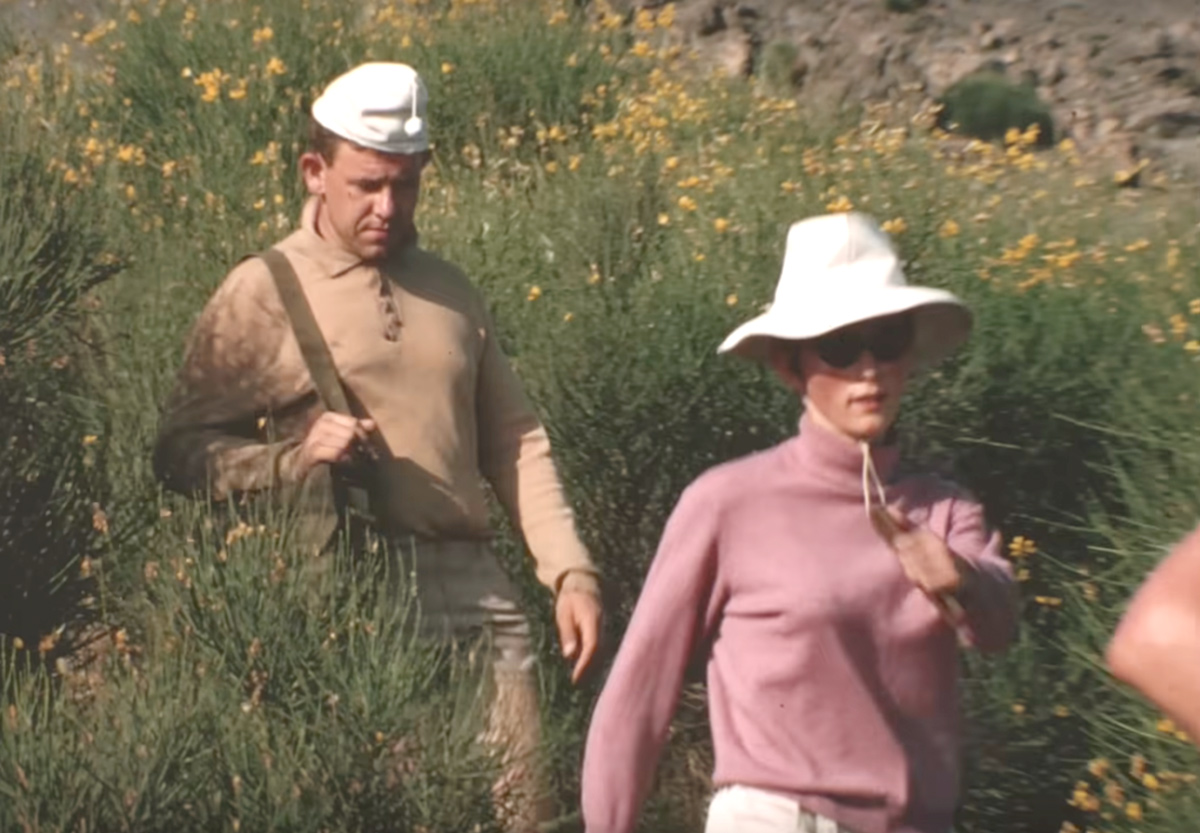
As noted above, Fire of Love is also a love story between dowdy academics, exactly the dynamic Wes Anderson has spent an entire career exploring, whether it’s Danny Glover and Etheline Tenenbaum, Steve and Eleanor Zissou, Bill Murray and Frances McDormand in Moonrise Kingdom, or half the characters in The French Dispatch. Naturally, the Kraffts are also usually depicted running around exotic landscapes wearing matching, goofy normcore costumes (and holy shit does Wes Anderson ever love him some costumes and uniforms). Even the Krafft’s outfits themselves look like they were lifted from The Life Aquatic, or vice versa:
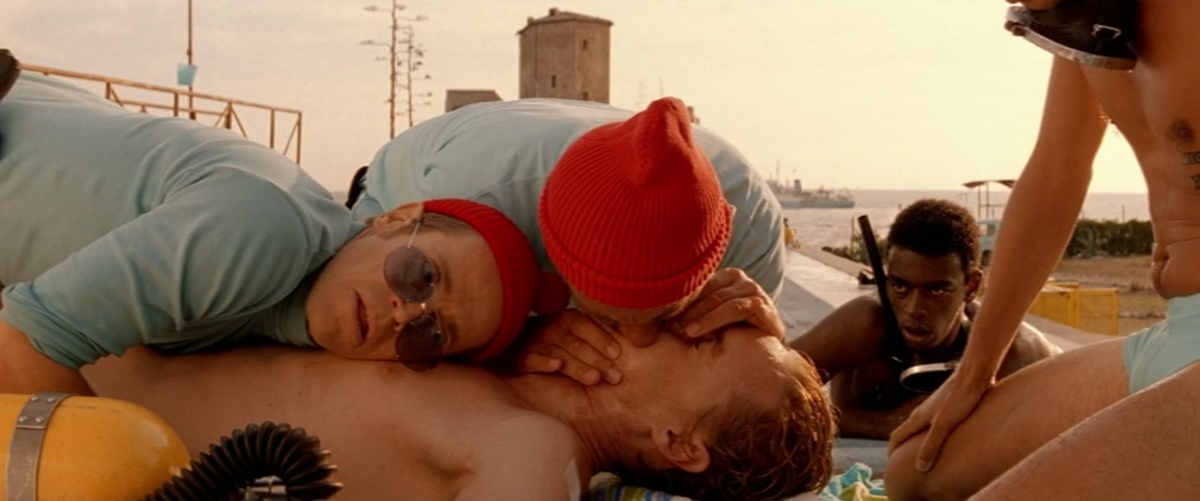
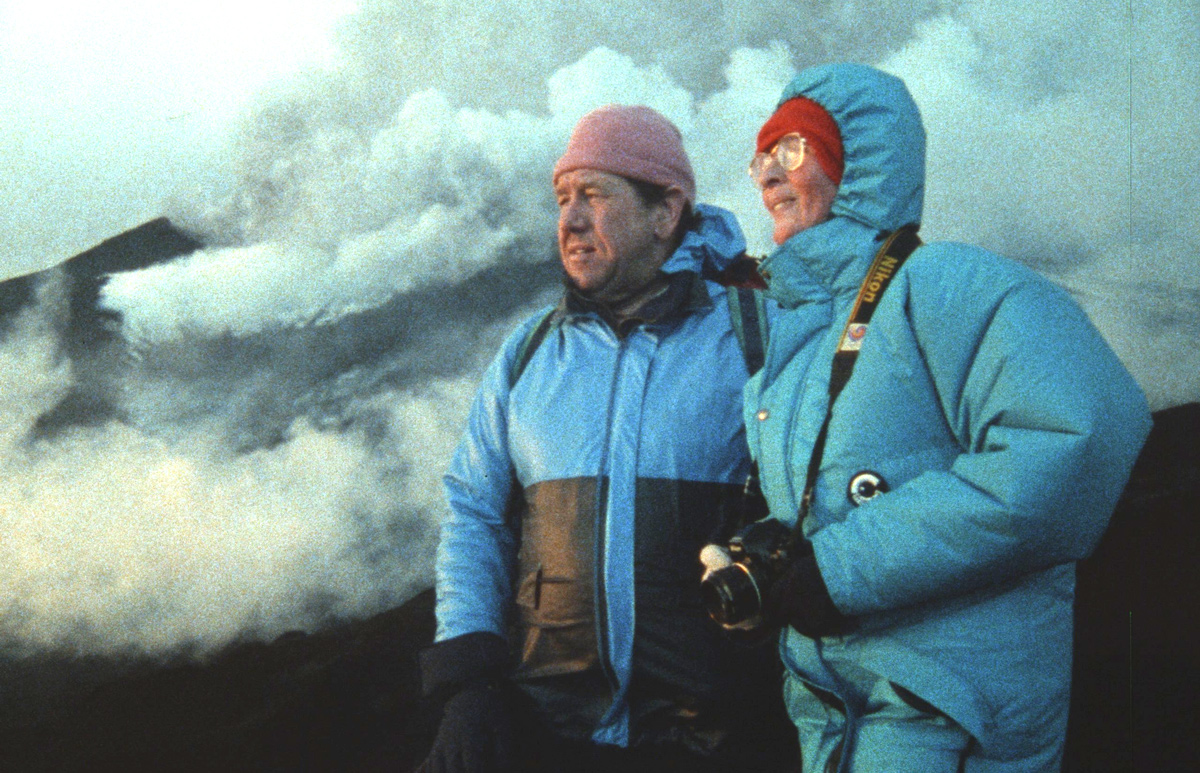
It’s even the same color scheme!
The Kraffts met in the late sixties and, disillusioned with the Vietnam War, spent most of their working volcanology life and relationship in the seventies, eighties, and just into the early nineties. It isn’t a spoiler to say that they died together at Mount Unzen in 1991, partly because it’s a real thing that happened, but also because the movie doesn’t withhold this information either. The rub is that their entire working life took place during the heyday of mid-century mod fashion and bulky, chunky analog tech — exactly the kind of shit Wes Anderson fucking loves, to an almost obnoxious degree.
Think: Margot Tenenbaum’s boxy record player. Suzy from Moonrise Kingdom‘s Polaroid camera. Basically every scientific doodad and doohicky from The Life Aquatic. It’s hard to find a scene in Fire Of Love where at least one of the Kraffts doesn’t have a giant SLR camera or binoculars around their neck, or isn’t fiddling with some instrument built out of wires and giant antennae.
The Kraffts spend the entire movie hopping around the globe, chasing volcanic eruptions while lugging around giant, clunky, presumably homemade protective gear — notably these giant silver, metal and asbestos full-body condoms:
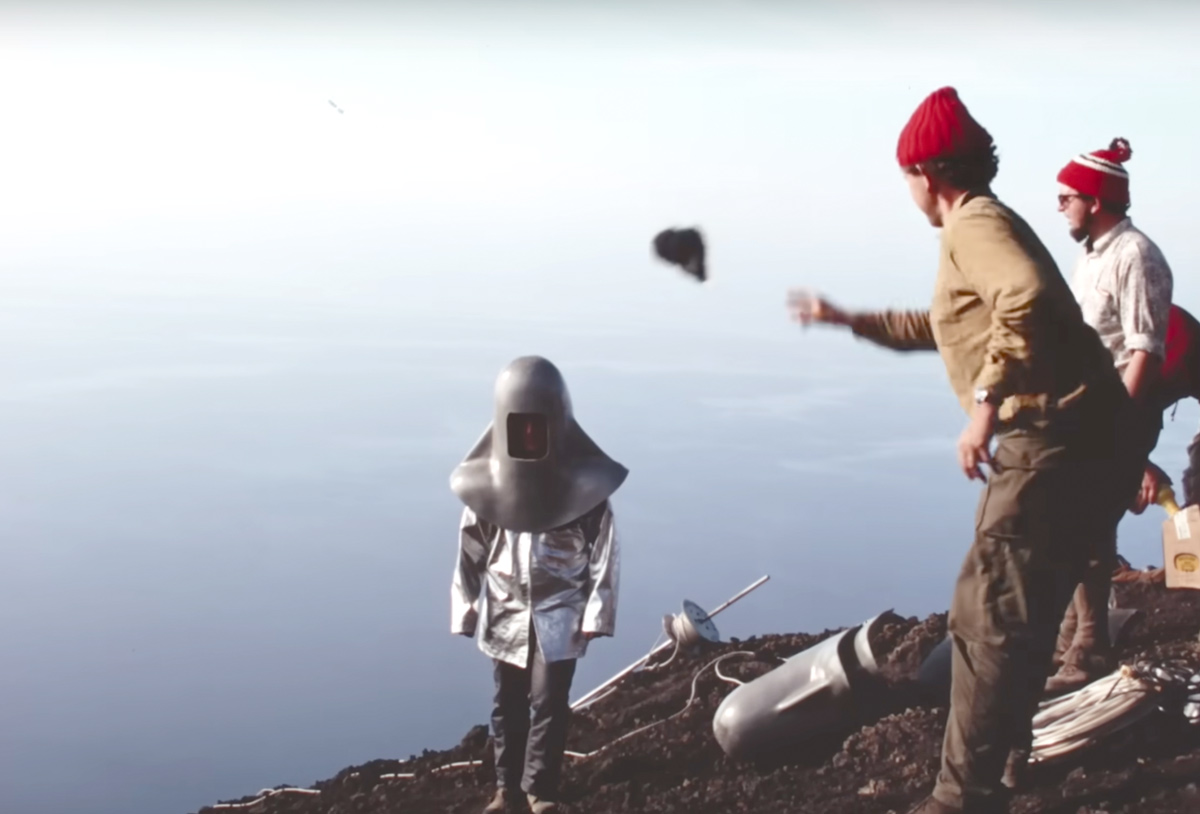
Through it all, the Kraffts photograph and film everything they do. Even their shooting style feels Andersonian, center framed in perfect focus with the subjects frequently darting from behind a tripod into the frame to smile kitchily before doing something charmingly eccentric.
Meanwhile, the footage in Fire Of Love not shot by the Kraffts tends to come from obscure, probably publicly-funded news magazine shows, hosted by chuffed pipe smoking men whom the Kraffts regale with tales of their latest adventure.
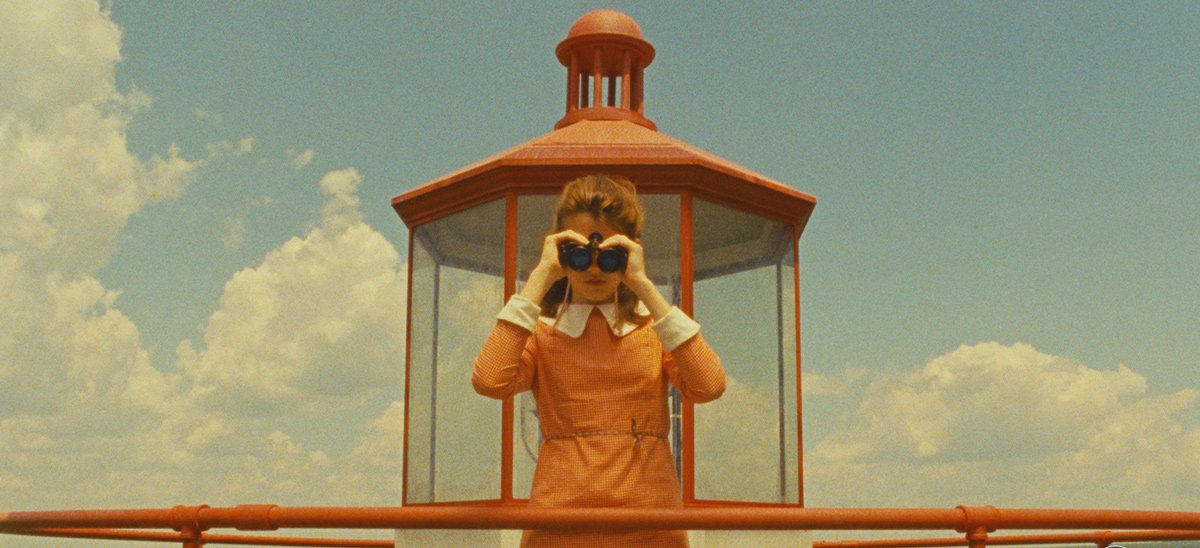
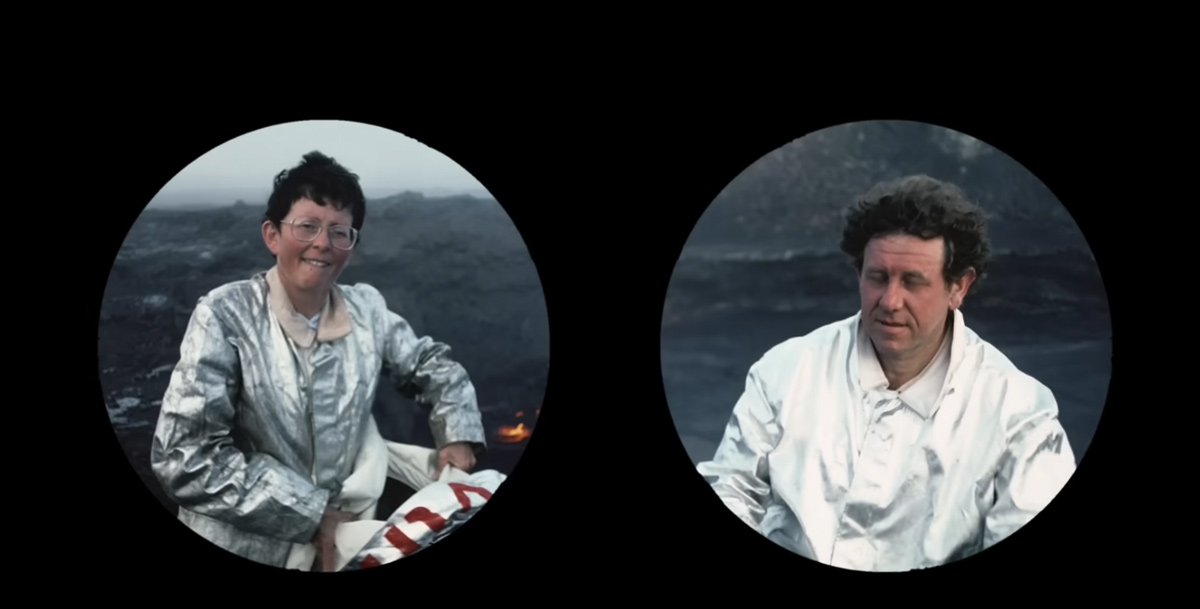
The Kraffts are sort of pseudo-famous in an eccentric, academia kind of way, like Eli Cash or Raleigh St. Clair or Steve Zissou. They have volcanology friends, volcanologist rivals, get drawn into volcanology drama.
The story they tell themselves and their pipe-smoking admirers is that they’re in it for the pursuit of human knowledge. Quickly though, it becomes clear that they’re thrill-seekers and performers as much as they are scientists, frequently taking risks that have more to do with the search for personal fulfillment and out of sheer horniness than with the quest for scientific knowledge. And those “flaws,” of course, only serve to make them seem more human.
If you always had a vague sense of Wes Anderson’s real-life inspirations, watching Fire Of Love is like seeing them suddenly rack into focus. It’s like the Kraffts sprung directly from his psyche. And if Anderson’s twee bullshit never worked on you before, this time it just might, because this eccentric love story with the bittersweet ending is more than just a style choice.
‘Fire Of Love’ plays in select theaters starting July 6th. Vince Mancini is on Twitter. You can access his archive of reviews here.







